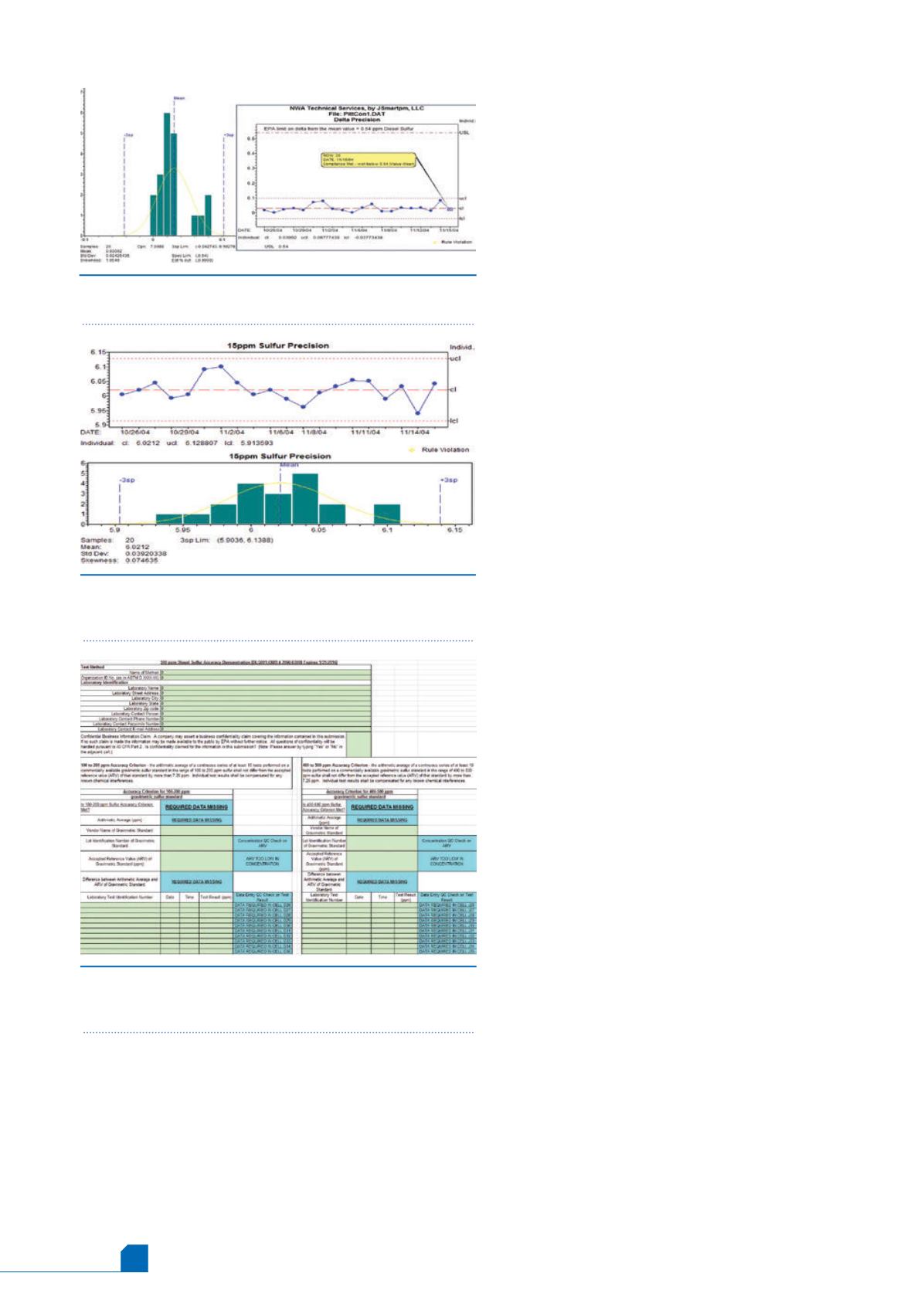
June
2016
HYDROCARBON
ENGINEERING
38
EPA CAA: a historical perspective
The CAA of 1963 and subsequent changes in 1970, 1977, and 1990
demonstrate efforts by the US to control and reduce air pollution. The
CAA of 1963 was the first federal legislation aiming to control air
pollution. An expansion in 1970 led to the development of federal and
state regulations and was followed by the establishment of the EPA in
1971.
Major amendments to the CAA were implemented in 1977 for the
Prevention of Significant Deterioration (PSD) in specified areas with
Figure 1.
Historical data – PBATMA regulations require that
AC/CA data is stored for five years for review and analysis.
Figure 2.
Refineries are required to monitor and adjust their
control limits if the new calculated limits are statistically,
significantly different from the existing limits.
Figure 3.
EPA sulfur test method spreadsheet – the EPA
offers a sulfur test method spreadsheet for diesel that can
be adapted for expanded applications.
5
separate requirements for ‘non-attainment’ areas that could not
meet federal air quality standards (National Ambient Air Quality
Standards [NAAQS]). In 1990, further amendments included
increased authority at the federal level. This series of
amendments addressed acid rain, ozone protection, increased
enforcement, and an expansion of research.
Fuel refineries experienced multiple milestones, including
the reduction and ultimate elimination of lead-based additives
and the reformulation of gasoline for cleaner burning motor
fuels. The article, ‘Clean by Design’, discusses the increased
standards for clean fuel manufacturing.
1
Clean fuels compliance
has deeply affected quality control (QC) standards. Attention to
the accuracy of data has grown exponentially since the CAAwas
established, with a significant increase in expectations this year.
Stringent guideline changes
PBATMA provides guidelines to ensure the accuracy and
precision of data generated by fuel refineries. In the past, data
quality was deemed acceptable based on industry
recommendations with minimal statistical analysis, but PBTAMA
requires tracking and reporting specific precision and accuracy
parameter variations.
Effective from January 2016, the Tier III regulations expanded
to require heightened certification testing with defined test
method compliance criteria. Every batch of motor fuel must be
systematically tested to prove that the material is suitable and
data must be collected in such a way that specific results can be
reported to the EPA.
In the past, testing methods were regulated but monitoring
precision and accuracy was left up to individual laboratories.
Approved testing methods were tracked by version number.
Federal regulations required labs to use outdated methods for a
period of time when the regulations were not updated as
quickly as the new lab methodology. The introduction of the
PBTMA has addressed these issues with regulations regarding
the performance of tests, according to published methodology
and demonstration of the quality of data. Each parameter
(vapour pressure, etc.) for a batch of gasoline must be within
specifications and test method precision, and accuracy must be
properly demonstrated or the product cannot be released to
commerce.
Refineries must track details of laboratory organisation,
ambient temperatures, humidity and other important
parameters.
Regulatory compliance: staying on top
of the details
Because the CAA is the precursor to many environmental laws,
and has seen great change since it was initiated in the 1960s, the
documents outlining regulatory compliance are often updated.
Details of regulatory compliance, reporting and records
management are located in the Code of Federal Regulations
(CFR).
2
It is important to note that the CFR is a living document
with a procedure for change. In the author’s opinion, it is always
best to use the official government electronic format of the
code when obtaining details to ensure that they are current. The
government provides a website (eCFR) where the current code
can be found.
3
It is also important to note that the storage of data is critical
for compliance. Assignable cause/corrective action (AC/CA)


